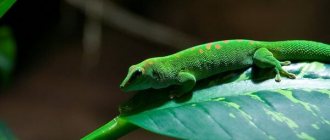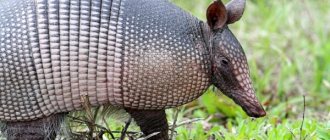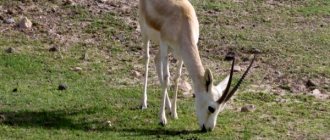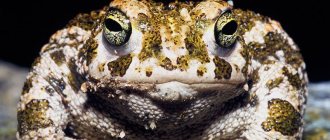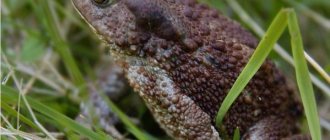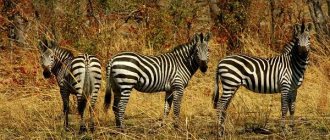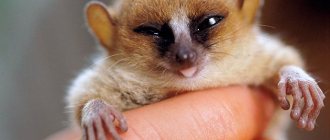Scorpions (Scorpionidea) are an order of the class of arachnids (otherwise called arachnids), such as arthropods, or arthropods (Arthropoda).
Over the millennia, geographical conditions changed, many land creatures underwent significant metamorphoses, entire classes and orders of animals died out... Scorpions not only retained their original appearance, but even their way of life remained the same. Apparently, this happened because nature created them as such perfect creatures that changing environmental conditions did not introduce anything new either into their external or internal structure. By the way, the same can be said about turtles, whose appearance has also remained almost unchanged.
The fact that scorpions have remained virtually unchanged over thousands of years can be evidenced by the imprints of bodies left by ancient scorpions on stones. They are almost no different from modern representatives. But oddly enough, this ancient order of arthropods has been little studied.
The most recognized theory is the origin of scorpions, created by academician E.N. Pavlovsky. In his opinion, during the Silurian period of the Earth's development, the scorpion belonged to the animals living in coastal sea waters. He became the ancestor of the terrestrial representatives of the order of scorpions. The first land scorpions appeared more than 300 million years ago. All modern families of scorpions formed 70-100 million years ago. Today, 77 genera and up to 700 species are known from the scorpion families.
Scorpio is one of the oldest inhabitants of the Earth
Scorpions are descended from eurypterids, extinct arthropods that existed during the Paleozoic era, shared features with modern scorpions, but lived in water. This fact is considered a successful example of the evolutionary transition of animals from water to land.
Some scientists dispute this claim, citing cladistic analysis (one of the scientific methods of biological classification). Paleontologists are unanimous that scorpions have been around for at least 400 million years. This makes them one of the most ancient creatures living on our planet.
Tityus serrulatus
This dangerous inhabitant of Brazil is characterized by aggressive behavior and toxic poison. Due to its discreet color, it is difficult to notice on the earth's surface, which is why the number of attacks increases significantly.
Adults do not grow more than 6 cm, and because of its pale color it is also called the “yellow scorpion”. It is especially dangerous for children, and in history, deaths have been recorded more than once after the bite of this Brazilian scorpion.
It also has one of its distinctive features: this species reproduces parthenogenetically, that is, new life is born in the body of a female without male fertilization.
4
Description and features
Scorpio is a predatory arachnid creature. He has 8 legs. One pair of limbs ends in claws. The segmented tail with a curved spike at the end gives it a recognizable appearance. All 1,750 known species are similar in appearance but vary in size. Length varies from 1.3 cm to 23 cm.
The body consists of two main parts (togmata): the head and abdominal sections. The abdominal part, in turn, consists of a wide anterior and caudal posterior parts. The back part consists of five elements. A segment is attached to the latter, which ends with a needle. The end of the needle has two outlets for the toxin. The scorpion in the photo always shows a curved tail with a needle.
The poison is generated by glands. They are surrounded by muscles, during the contraction of which the fluid produced by the glands flows through the ducts to the end of the needle, and from there into the victim’s body. The head part is the union of the head and chest, the so-called cephalothorax or Cephalothorax. The cephalothorax is covered with a chitinous membrane.
On the head there are eyes and a mouth. At the mouth there are chelicerae - food processes, they function like jaws. Behind them come the pedipalps - claws. This is followed by three pairs of limbs that enable the arachnid to move.
The eyes are located on the upper part of the cephalothorax. Scorpio is an animal that can have from one to six pairs of eyes. The most advantageous position is occupied by the two main eyes. They are called median and are located at the top of the cephalothorax. The rest play the role of additional eyes, located on the left and right sides of the front of the body.
The middle eyes are the most complex. They cannot provide a contrast image, but they are the most sensitive visual organs among arachnids. They are able to sense even minor light fluxes. This allows you to distinguish the contours of the surrounding world in the dark.
Centruroides vittatus
The most common species in the southern United States and Mexico is dangerous because, living mainly under the bark of trees, it can also inhabit wooden human dwellings.
Adults do not grow more than 7 cm, and there are two dark lines running along the yellowish abdomen, so it is easy to identify. Thousands of people suffer from bites from this species every year. The bite causes severe swelling and a prolonged burning sensation.
The poison is not dangerous for an adult, healthy person, but for children and the elderly, a bite can be fatal.
5
Kinds
When deciding what class of animals a scorpion belongs to, just look at the biological classifier. Scorpios form a troop. It is part of the class of arachnids, which, in turn, is subordinate to the phylum of arthropods.
The main families included in the order of scorpions:
1. Akravidae - a family in which there is one genus and one species (Akrav israchanani). Discovered in one of the caves in Israel. A distinctive feature is the complete degradation of the visual organs.
Cave scorpion Akravidae
2. Bothriuridae - a family containing 140 species of small scorpions. Only two species are found in Australia and South Africa. The rest live in South America.
Scorpion Bothriuridae
3. Buthidae - butids. There are 900 species included in this family. With the exception of Antarctica, they live on all continents. The sizes of these arthropods are average. Most have 2 cm. The largest reaches 12 cm.
Scorpio Buthidae
4. Caraboctonidae - 4 genera and 30 species of these scorpions are found in America. One of the species can grow up to 14 cm in length, lives quite a long time, and is often kept in home terrariums. This species is called Hadrurus arizonensis or Arizona hairy scorpion.
Scorpion Caraboctonidae
5. Chactidae - Hectid scorpions. 170 species from 11 genera are included in this family. Their homeland is Central America.
Scorpion Chactidae
6. Chaerilidae - this family includes one genus, Chaerilus, which includes 35 species, they live in the south and east of Asia.
Scorpion Chaerilidae
7. Euscorpiidae - a family containing 90 species. Distributed in both Americas and Asia. There is a species found in the south of England. This family also includes the Crimean scorpion (system name: Euscorpius tauricus). Scorpions in Russia are represented by this endemic species.
Scorpion Euscorpiidae
8. Hemiscorpiidae or Hemiscorpeides - 90 species are included in this family. Some are kept in captivity. This family includes Hemiscorpius lepturus, a scorpion dangerous to humans.
Scorpion Hemiscorpiidae
9. Ischnuridae - a small family. It includes only 4 types. Distributed in Central Asia, Vietnam and Laos.
Scorpion Ischnuridae
10. Iuridae – 2 genera, 8 species are included in this family. It is common in Greece, Syria, Turkey, and northern Iraq.
Scorpion Iuridae
11. Microcharmidae is a small family consisting of 2 genera and 15 species. Arachnids are small, from 1 to 2 cm. They live in Africa and Madagascar.
Scorpion Microcharmidae
12. Pseudochactidae is a family consisting of 4 species. Lives in caves in Central Asia and Vietnam.
Scorpion Pseudochactidae
13. Scorpionidae - 262 species, of which 2 are extinct, are included in this family and live everywhere except Europe and Antarctica. Some species are often kept at home. The emperor scorpion (system name: Pandinus imperator) is especially popular. It can grow up to 20 cm in length and reach a weight of 30 g.
Scorpionidae
14. Superstitioniidae - the family contains one genus. These are small (2-2.5 cm in length), yellow or yellow-brown scorpions found in Arizona.
Scorpion Superstitioniidae
15. Vaejovidae - the family includes 17 genera and 170 species. All species are native to Mexico and the southern United States.
Scorpion Vaejovidae
Buthus occitanus
For its inexpressive appearance, this species, which lives in North Africa and the Mediterranean coast of Europe, received the discreet name “common yellow scorpion.”
It grows from 6 to 8 cm in length, and this is the smallest scorpion of all those presented in our article. The scorpion, which has a toxic venom of the BotIT6 category, can be found in dry areas with sparse vegetation.
The bite can cause difficulty breathing, cause vomiting and dizziness. The only good thing is that cases of attacks on people are very rare.
7
Lifestyle and habitat
It is believed that scorpions prefer hot, dry, desert and semi-desert areas. But the statement that the scorpion is a desert animal is not entirely true. In fact, they can be found in any territory that is not characterized by long, frosty winters. Although some representatives (for example, the Buthidae family) tolerate temperature drops of up to -25 °C.
Some species are not tied to a specific habitat. They can be found in forests, fields and even cities. For example, the Italian scorpion (Latin name: Euscorpius italicus) lives throughout Europe, in the South and North Caucasus. Others prefer only a specific niche.
Hygrophilic forms inhabit humid places, while xerophilic forms inhabit desert areas. Many exotic animal lovers keep scorpions at home. Organizing a place for this arachnid to live is simple. A rectangular glass terrarium will do.
Most often, lovers of these animals acquire the species Pandinus imperator. This scorpion lives in captivity for a long time, up to 10 years. It grows to large sizes, up to 20 cm. It is not for nothing that it is called imperial. What is important is that its poison has low toxicity.
Scorpio in the desert
The temperature and humidity in the terrarium are adjusted to the selected species. Emperor scorpions love high humidity and high temperatures (about 25 °C). Feed the scorpion once a week. 1-2 crickets or mealworms will completely satisfy the predator.
But the emperor scorpion is low-toxic. This makes it, in the eyes of amateurs, not a very interesting object to keep. In this case, exotic lovers choose the species Androctonus australis (aka: fat-tailed scorpions).
Every year they kill several dozen people. The conditions of their maintenance are as simple as those of imperial scorpions. Safety considerations come first. A killer Scorpio should not be able to escape.
Scorpions live on every continent except Antarctica
Scorpions survive in a variety of habitats, from tropical rainforests and grasslands to deserts and semi-arid areas. Many species dig small and cozy burrows. Others may climb trees or hide under bark, leaf litter, rocks, logs or debris. On hot days, scorpions enter houses through voids in the walls and take refuge in cool, damp places.
Nutrition
The scorpion's food is, first of all, insects, spiders, and butterflies. Anything he can catch and anything that fits his size, including members of his own species. A lucky scorpion is able to kill and eat a small lizard or mouse.
In unfavorable conditions, scorpions can go without food for a long time. Many months of starvation of this arthropod have been recorded while maintaining normal activity. In the right case, a scorpion can eat a relative, that is, they are characterized by cannibalism.
The limbs of this arachnid are equipped with sensitive tactile hairs. They pick up vibrations in the soil caused by an insect that appears next to the scorpion. After which the unwary victim is captured. Focus on tactile senses makes Scorpio a successful night hunter.
Scorpion eats insect larvae
Scorpio does not always give a poisonous injection. Poison must be saved. It takes him a long time to recover. Therefore, small insects are killed by simply holding them and tearing them apart. Or they become food while still alive.
Scorpio cannot digest the hard parts of insects. It releases a certain amount of digestive juice onto the victim, and absorbs everything that turns into a semi-liquid state. Scorpio is a dangerous nocturnal predator.
But it is often itself a victim of other carnivores. The first place among scorpion hunters is occupied by scorpions themselves. Spiders, birds and small predators actively hunt these arthropods. Victory is ensured by weak susceptibility to poison. A quick attack from the rear is no less effective. Mongooses, hedgehogs and monkeys use this tactic.
There can be up to 45 different toxins in scorpion venom
All scorpions produce venom, but only 25 species are considered dangerous to human life. The sting of most scorpions is enough to kill an insect or spider, but healthy adults will easily survive it, although the sting will be very unpleasant. Expect severe, radiating pain near the bite site. Some people describe it as feeling like the skin is on fire. Numbness and tingling are also common symptoms. Worst reactions (especially in young children) include difficulty breathing, rapid heartbeat, vomiting, drooling, and muscle twitching.
The first and subsequent scorpion stings contain different toxins. The former is usually strong enough to stun vertebrate prey or predator; subsequent bites are fatal to insects, crustaceans and invertebrates. Some animals, such as meerkats and mongooses, are immune or resistant to their venom.
In addition, scorpions can control the amount of venom released with each sting, so some stings are less venomous or contain no venom at all. It is generally accepted that the amount of venom released by a scorpion depends on the danger it believes it is in.
Reproduction and lifespan
The mating ritual includes mating and a mating dance. The male holds the female with his forelimbs and begins to lead her along. This joint movement can continue for hours.
During this strange round dance, the male releases a capsule with seminal fluid (spermatophore). The female, following the male, comes into contact with the spermatophore. It enters the female's genitals, located in the lower abdomen. Fertilization occurs.
Female scorpion with offspring
The end of the mating dance coincides with the end of the fertilization process. At this moment, it is important for the male to quickly leave, otherwise he will be eaten. The female's pregnancy lasts a long time: from several months to one and a half years. As a result, from 20 to 30 or more cubs are born. The newborns are born one by one and are placed on the mother's back.
The scorpion is an invertebrate animal , but it has an exoskeleton in the form of a shell. In newly born arthropods it is soft. After a few hours the shell hardens. Young scorpions leave their mother's back and begin to lead an independent life. The first threat that they encounter in their life is their own mother. She can eat her offspring.
One of the important stages in the life of a Scorpio is molting. The age of young arthropods is measured by the number of molts. In order to become adults, young scorpions need to survive 5-7 molts.
The exoskeleton splits, the scorpion crawls out of the old shell, remaining soft and defenseless until the new armor completely hardens. Scorpions live long. From 2 to 10 years. Under favorable conditions, this life threshold can be exceeded.
Did you know?
- Scorpions can live underwater for up to two days. You can even freeze a scorpion and it won't die!
- Regardless of size, the life expectancy of a scorpion is three to five years, although some can live up to 25 years.
- As adults, most scorpions are solitary, usually remaining in the same territory throughout their lives.
- Scorpions are preyed upon by millipedes, shrews, owls, bats, hornbills and coyotes.
- The devil scorpion, which lives in Brazil, is capable of reproducing through parthenogenesis, meaning the female does not need a male to fertilize her eggs.
- Scorpios are immune to their own poison.
- Like crickets, some species of scorpions “sing” by rubbing their legs together. However, unlike crickets, the song is thought to be used as a warning signal rather than a call to attract a mate.
Family Microcharmidae
There are 15 species, scorpions are small, body length from 0.8 to 1.8 cm. The family includes the following species:
- Microcharmus antongil
- Microcharmus bemaraha
- Microcharmus cloudsleythompsoni
- Microcharmus confluenciatus
- Microcharmus djangoa
- Microcharmus duhemi
- Microcharmus fisheri
- Microcharmus hauseri
- Microcharmus jussarae
- Microcharmus maculatus
- Microcharmus madagascariensis
- Microcharmus pauliani
- Microcharmus sabineae
- Microcharmus variegatu
- Microcharmus violaceus
Haymakers
The long-legged arachnids, known as harvestmen (in the US they are called centipedes - in Britain this name refers to a long-legged two-winged insect), are related to scorpions and resemble spiders in appearance. There are 3,200 species in the world ranging in size from 1 mm to tropical giants with a body length of 20 mm and a leg length of 160 mm. Their abdomen and chest are not separated.
Haymakers are harmless creatures. Of all the arachnids, they are the least picky eater and feed on insects, fruits and small invertebrates. They primarily hunt at night, are non-venomous and do not weave silk. Females lay eggs in the ground or rotting wood using an elongated tube called the ovipositor.
Parasitoform mites
The most numerous representatives of arachnids are acariform and ixodid (parasitic) ticks. About 25,000 species are known, but there may be 5 times more. They are distributed almost throughout the world - from the tropics to the polar regions. Some mites live in the ground, others live on plants, and many species parasitize animals. Ixodid ticks are larger in size than acariform ticks, but they are all blood-sucking and are carriers of many diseases dangerous to humans and domestic animals. Mites can cause great economic loss to farmers.
